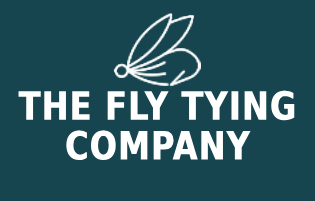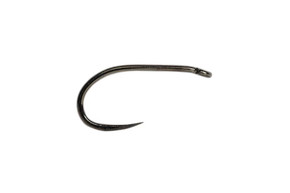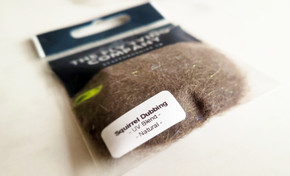Origin & History
The Czech Nymph was developed in the 1980s by competition fly fishers in the former Czechoslovakia. Originally designed to imitate freshwater shrimp, caddis larvae, and other bottom-dwelling aquatic insects, this slim-bodied, heavily weighted pattern revolutionised European nymphing. The style became globally popular after the Czech team’s success in international fly-fishing championships, where their "short-line nymphing" method proved unbeatable in fast, deep rivers.
Materials
- Hook: Curved grub/nymph hook, sizes 8–14
- Thread: Olive, brown, or black thread (8/0 or 70D)
- Body: Natural dubbing (hare’s ear, olive, or tan)
- Ribbing: Fine copper or gold wire
- Shellback: Clear or coloured scud back, thin skin, or tinsel
- Thorax: Peacock herl or darker dubbing
- Weight: Lead or tungsten wire underbody
Step-by-Step Tying
- Prepare the Hook: Secure the curved hook in the vise and wrap a firm layer of lead or tungsten wire around the shank for weight. Cover with thread to lock in place.
- Form the Underbody: Build a slim, tapered underbody with thread, ensuring it’s smooth for the shellback.
- Add the Rib: Tie in a length of copper wire at the hook bend for ribbing.
- Attach the Shellback: Secure a strip of scud back or tinsel over the top of the shank, leaving enough to pull forward later.
- Create the Body: Dub a slim, tapered body using hare’s ear or olive dubbing, working towards the thorax area.
- Pull Over the Shellback: Stretch the shellback forward over the dubbing and secure behind the hook eye.
- Rib the Fly: Counter-wrap the copper wire over the shellback in even turns to segment the body and lock the material.
- Form the Thorax: Add a pinch of darker dubbing or a few turns of peacock herl for contrast.
- Finish: Whip finish neatly, trim excess, and add a coat of varnish for durability.
Variations
- Hare’s Ear Czech Nymph: Classic natural hare’s ear dubbing for all-round effectiveness.
- Olive Czech Nymph: Olive dubbing and dark shellback, great in algae-rich rivers.
- Hot Spot Czech Nymph: Add a fluorescent orange or chartreuse thread collar for extra attraction.
- Peacock Thorax Czech Nymph: Uses peacock herl for a natural thorax hotspot.
- Tungsten Czech Nymph: Weighted heavily with tungsten wire for fast, deep runs.
Seasonality & What It Represents
Czech Nymphs are effective year-round because they imitate shrimp, caddis larvae, and general nymph forms trout feed on constantly. Particularly effective in spring and summer when insect life is abundant, but also valuable in winter for deep, slow presentations in cold water.
Tackle & Setup
- Rod: 10–11 ft 3–4 weight euro-nymphing rod
- Line: Specialised euro-nymph line or thin level line
- Leader: 12–20 ft euro-nymph leader
- Tippet: 4–6X fluorocarbon for natural drift
- Presentation: Short-line Czech/Euro nymphing with tight line control
Summary Table
| Feature | Details |
|---|---|
| Hook Size | 8–14 curved nymph hook |
| Thread | Olive, brown, or black |
| Body | Hare’s ear, olive, or tan dubbing |
| Ribbing | Fine copper or gold wire |
| Shellback | Scud back, thin skin, or tinsel |
| Thorax | Peacock herl or darker dubbing |
| Weight | Lead or tungsten wire underbody |
| Seasonality | All year round |
| Best For | Shrimp, caddis, and bottom-dwelling nymph imitations |












